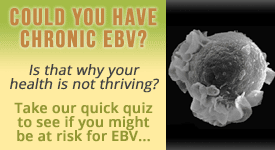Superfoods ~ Green Staples For Your Kitchen
Dr. Kasia Kines, Nutritionist, CEO and founder of EBV Educational Institute
Virtual clinic serving the US and globally
[email protected]
Superfoods – it’s a hot word! We all want to eat a little of something that is supposed to have some remarkable health benefits. I am not talking about the broccoli or kale this time… I want to share with you what I have in my kitchen: my favorite little superfoods greens. They are delicious, powerful and really handy. And in this culture, we are lucky if we use them for…garnish!!! Not cool! Let’s bring them back into the kitchen!
My super heroes are fresh cilantro, parsley, green onion and dill. Today I will tell you why they are so good for you and how versatile and tasty they are in your kitchen. I will also show you how to prepare them for storage to minimize wilting. How many times did you buy a bunch of parsley only to throw it away? I know you did. I know I do sometimes. But I have some great tips for you! If you use any of the ideas in this post and you do fall in love with either of these greens, let me know! I would love to hear it!
First, why I love superfoods and you should too!
They are green and like any green leafy vegetable, they have a perfect ratio of Calcium: magnesium, which is a perfect way to get these key nutrients for your bones (think of cows and horses grazing on grass).
- They contain the famous chlorophyll, the green pigment, which has antioxidant and possibly anti-cancer qualities; chlorophyll is identical in structure to hemoglobin, but instead of carrying oxygen (which hemoglobin does), it carries magnesium. Why it that important? See my post on Magnesium.
- Chlorophyll can help cleanse and maintain healthy blood and liver function, protect you from radiation from X-rays, MRIs, air travel, and has the ability to attach to toxins for excretion (we call it a chelating effect).
- They contain beta-carotene – you probably think of carrots and their orange color. Well, if you were to remove the green chlorophyll, I am pretty sure these greens would look orange.
- They have many other benefits, and I will walk you through the uniqueness of each of them.
- Make sure you pick them organic. Some of them, as you just heard me say, chelate heavy metals. You do not want them to pull these heavy metals out of contaminated soil.
Cilantro
- You either love it or despise it (10% of population); if you hate it, it is because it tastes like soap to you. Cilantro has a number of aldehydes responsible for soapy/foul taste. Your preference has a genetic component- it is not personal. Studies have identified a single nucleotide polymorphism (SNP). This SNP, rs72921001, lies within a cluster of olfactory receptor genes on chromosome 11. Among these olfactory receptor genes is OR6A2, which has a high binding specificity for several of the aldehydes that give cilantro its characteristic odor.
- Among its many traditional benefits are digestive aid, anti-diabetic and anti-inflammatory functions. New research adds anti-microbial properties, anti-anxiety action, and cholesterol-lowering effects. But my greatest interest is cilantro’s ability to chelate heavy metals. You can try processing cilantro, garlic, olive oil and Celtic sea salt in a food processing for that purpose.
- Did you know that coriander seed comes from the cilantro plant?
Dill Weed
- Its well knows benefits are: preventing flatulence and digestive disturbance; sedative properties; it has some anti-microbial and anti-cancer properties; it promotes detoxification in the liver, especially due to monoterpene (one of its flavonoids), which activates liver enzyme glutathione-S-transferase. As a result, dill has been called a “chemoprotective” food that can help neutralize carcinogens such as smoke, charcoal grill smoke, and smoke form trash incinerators.
Parsley
- It has an impressive list of benefits. Of course, it is high in chlorophyll and carotenoids. It is a great source of iron as well, especially valuable for people with iron anemia. It also has a good reputation for its Vitamin C content, among many other vitamins and minerals.
- Studies have shown that parsley can inhibit cancer-causing properties of fried foods- this is due to the chlorophyll, Vitamin C, flavonoids, carotenes, and volatile oil compounds.
Green Onions
-
It is very reputable as a member of allium (garlic) family, which is instrumental for a healthy detoxification process in your body due to high sulfuric content. Green onion also has anti-microbial and anti-fungal properties; it has been shown to alleviate chest and heart pain and promote urination and sweating as well as supporting digestion. Like the greens already mentioned, they have vitamin, minerals, flavonoids, and volatile oil compounds.
Tips how to Never Again Waste your Little Green Superfoods Heroes
Traditionally, you wrap the green in paper towel and keep in a perforated plastic bag in the fridge (I have done that); the challenge is to remember that you have it; once you bury it in the crisper, it has a potential of becoming UFO (unidentified food object); I know that some times I just do not care to unwrap it, chop it, wrap it back, and put it back in the fridge. If I feel this way, I suspect I am not alone!
My Superfoods Tip for You – from my Kitchen:
I have a much better tip for you, buy a variety of these greens during the same shopping tour – you can see that I just bought green onion, parsley, and dill weed. Prep them at the same time, so you will have a variety to choose from in the coming week.
- Wash them and pat with a paper towel until as dry as you can get them.
- Cut of the bottoms and the stems and use them if you can (e.g. parsley stems are excellent for juicing or for soup stock).
- Chop the leaves.
- Put each green completely chopped into a glass container.
- Keep the container in front of the fridge, so when you cook, you just grab one to use instantly.
Superfoods Recipe Tips:
- Whichever green I have, I will throw a generous handful into the serving bowl of a soup I am about to eat (so no cooking involved) or I add at least 2 generous handfuls to a pot of soup that has just finished cooking.
Cilantro: I used it for any Indian recipe, salsa, and really any soup; I also use it as part of a pesto recipe instead of or along with basil. If I make a meal for others, I keep cilantro on a side just in case there is a person with the Gene NSP.
- Dill weed: I love adding a generous handful to my split pea soup or to a red beet soup; also, young organic steamed potatoes with skins on do very well with dill; I add it to any soup and any fresh salad. Dill weed smells like spring to me. It brings a salad to life. If you eat eggs, add 2 tsp chopped dill to each cup of your favorite egg salad. Try this summer recipe: combine ¼ cup chopped dill weed, 1 cup plain (non)-dairy yogurt, and 1 cup chopped cucumber for a lovely cool dip. If you eat fish, putting a few leaves on top of the fish before baking will bring a lot of extra flavor.
- Green onions: You can use them instead of or along with onions in scrambled eggs. You can add them to soups, especially at the end of cooking. For example, miso soup is always served with green onion. They are also perfect chopped into a fresh salad.
- Parsley: you can replace it for part or all of basil in a pesto recipe; you can make a tabouli recipe (just use quinoa except cracked wheat), which is very rich in parsley; I also throw a generous handful of parley into any soup I am about to eat and any fresh salad. When I make my Polish sauerkraut recipe, I add olive oil, chopped onion, grated carrot and apple and THEN I add a generous amount of fresh chopped parsley. THAT is divine. If you juice, add some stem leftovers of the whole parsley leaves to your juice. If you eat animal protein, you can make a rub: combine chopped parsley, garlic, and lemon zest.
- Bottom line: These tiny green superfoods are so delicious and so good for you. I want you to see those glass containers whenever you open the fridge. I want you to grab the one you feel like adding to you meal. And I want you to add these at all times. Keep them coming. Enjoy the added flavor and benefits of these unheard super heroes!
Dr. Kasia Kines, Nutritionist, CEO and founder of EBV Educational Institute
Virtual clinic serving the US and globally
[email protected]
LEAVE A COMMENT
If you want to transform your life, if you want health and wellness, if you want peace of mind, there isn’t a better investment than working with Kasia.~ Beth


 They are green and like any green leafy vegetable, they have a perfect ratio of Calcium: magnesium, which is a perfect way to get these key nutrients for your bones (think of cows and horses grazing on grass).
They are green and like any green leafy vegetable, they have a perfect ratio of Calcium: magnesium, which is a perfect way to get these key nutrients for your bones (think of cows and horses grazing on grass).
 Cilantro: I used it for any Indian recipe, salsa, and really any soup; I also use it as part of a pesto recipe instead of or along with basil. If I make a meal for others, I keep cilantro on a side just in case there is a person with the Gene NSP.
Cilantro: I used it for any Indian recipe, salsa, and really any soup; I also use it as part of a pesto recipe instead of or along with basil. If I make a meal for others, I keep cilantro on a side just in case there is a person with the Gene NSP.



















4 Comments
Posted on February 14, 2016 at 2:18 PM by Joanne Kines
I use all of these greens daily but invariably I would forget about some and they would wilt. Sometimes I put them in little bags and freeze.
Really love your suggestion about the glass jars!
I am going to try it this week!
Posted on February 15, 2016 at 11:00 AM by Kasia Kines
Oh it absolutely works, and the best part is that you will see them every time you open the fridge, so it is so much easier to grab and use them for any meal. Otherwise, they get buried somewhere in the fridge. Happens all the time! So glad you found some good ideas here! Thank you for your post!
Posted on April 28, 2017 at 2:06 PM by sarah brody
Can’t believe I never thought to do this but yes, this past week, with my herbs prewashed and in a container, I certainly have incorporated them in my foods much more than usual! And a bonus is since they aren’t wet (I usually rush so much to prep them for my recipes that I skip drying them) they are so much easier to mince!
Posted on May 1, 2017 at 7:36 PM by Kasia Kines
It is as easy to waste them as it is to maximize them in the kitchen, isn’t it?